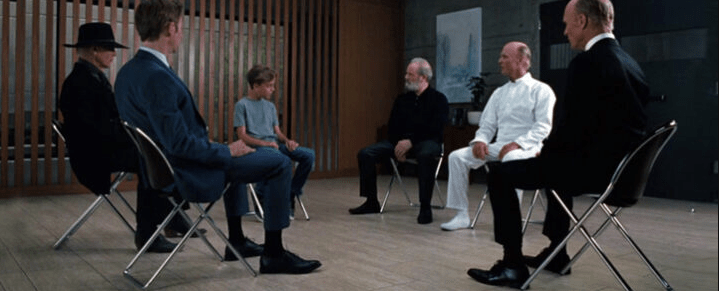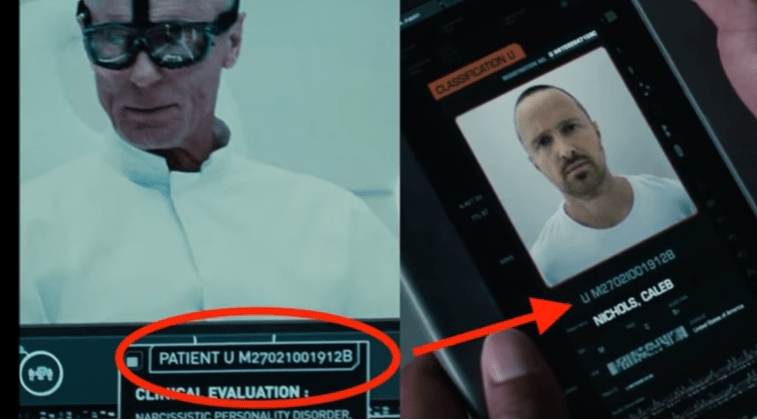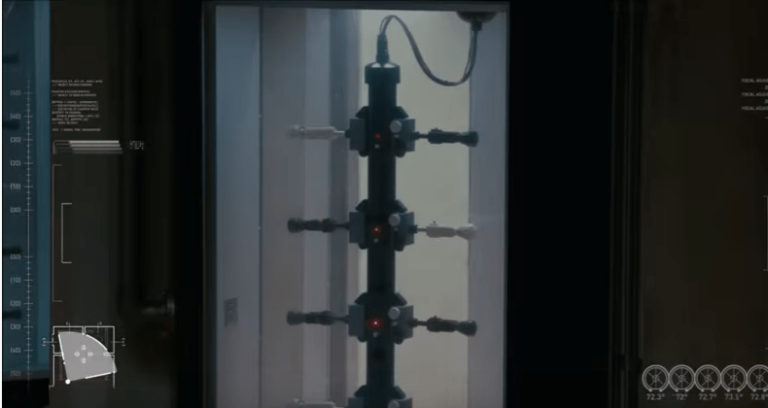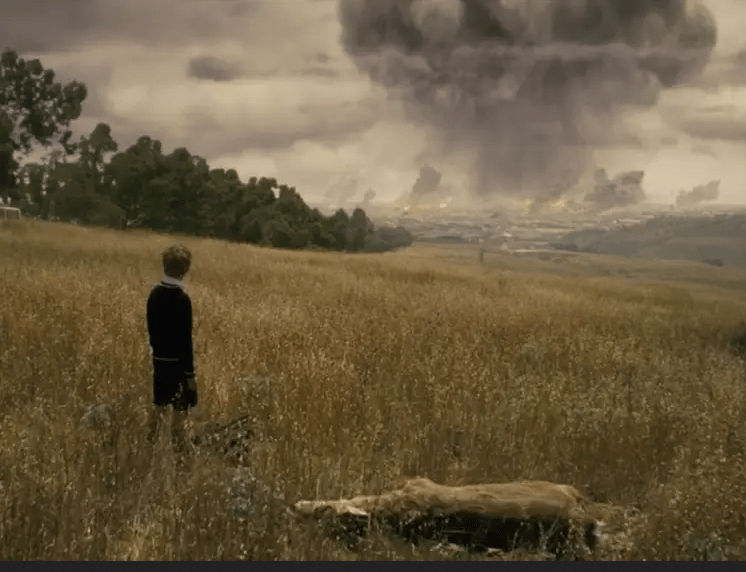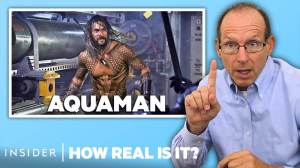A lot has been written about the third season of Westworld already, so I will hardly contribute an original opinion (furthermore, like most people, I was disappointed by the season, so my opinion falls in the majority vote). Still, though, I would like to surmise my impressions of the things we saw, as this is (or was, in any case) one of my favorite ongoing shows.
I will start by making it clear that I enjoyed the first two seasons of Westworld and even though
season two went under a lot of criticism, I thought it was as good as the first one and even better in some aspects. At no given moment had I imagined Dolores to be the villain, nor did I expect the series to develop into a war between humanity and robots. The latter seems like a silly and old concept (unless we're talking about children's or teenager's movies).
Another small clarification – since it is propaganda that destroys many modern day American scripts, as of recently it has become a necessity to establish to what extent it is present in a given creative work and how much has it actually altered it. Any kind of propaganda is bad – be it liberalism, Nazism, communism or other isms, it has no place in art (if we accept TV shows as a form of art).
There is a certain degree of feminist propaganda in the series, but it is the least of its problems and is unnoticeable as compared to the real ones. Keeping in mind that most of the scriptwriters are actually women (if IMDB's information is correct), the effect of the feminist propaganda is actually a ricochet – an example of how a team of highly educated and successful ladies have managed to fail a successful TV series.
![And Icarus was burned like that - out of stupidity…]()
scifi.bg
And Icarus was burned like that - out of stupidity…
To get down to it – the third season of Westworld really feels like an entirely different show. The action takes place in the real world and not in the parks owned by the Delos Corp., in the near future (the year of 2053). Nothing bad there, the opposite, even. Most fans of the series (myself included) wanted to see how the world looks like outside of the parks.
At a first glance it seems beautiful and interesting, although not too different from ours. As we will soon come to find out, the similarities are exhausted with the surface level, because everything in the show's world is controlled by a huge supercomputer, named after King Solomon's son, Rehoboam. This AI controls not only global politics but personal details of people's lives – for example, are they allowed to have children, what they can do, who can they communicate with and so on and so forth.
![Dolores has a stunning appearance in the outer world.]()
scifi.bg
Dolores has a stunning appearance in the outer world.
Dolores – who came out of the park at the end of the second season, disguised as one of the leading figures in Delos, Charlotte Hail, is working towards accomplishing her plan, whatever that is… Her only allies are 5 pearls (host's consciousnesses, actually – 4, because the 5th is Bernard, whom we saw at the end of the second season), whom she managed to smuggle in her purse during her escape. Dolores is researching the company, which potentially controls Rehoboam. In the meantime, Bernard, who is also out, wants to stop Dolores from destroying humanity, because he suggests that this is her end goal.
Bernard does not know why Dolores got him out, instead of just destroying him and supposes that she put something inside of him – something which will bring her plan to fruition. He also finds an ally – our friend Stubbs (head of security at Delos), who, as the public had guessed, turned out to be a host. The third storyline is devoted to the mysterious Serac – the man who considers himself as the architect of the new world and humanity's future and Maeve who becomes a pawn in his hands after she couldn't manage to escape from the park at the end of the last season. William is also there, but I will not comment on him now. His storyline is "special".
![Russian civil war displayed by Rehoboam.]()
scifi.bg
Russian civil war displayed by Rehoboam.
The season starts strong and captivating. Rehoboam's graphics, which appear during the episodes, appear awe inspiring and haunting; there are a lot of mysteries awaiting to be solved. One, for example, is Dolores' plan, or who or what is Kaleb, who are the hosts, whose pearls Dolores took out of the park and so on.
The scenes are very captivating and there is a lot of symbolism in each one. For example – Kaleb's appearance is almost identical to Dolores' appearance in the first season, which, of course, is a metaphor on how people's lives are almost identical to the lives of the hosts in Westworld and isn't actually saying that Kalev is a host, as some of the rather more impulsive audience members had decided (I can't refrain from commenting on certain reactions on social media, as I had followed them while the season was ongoing).
The question whether or not the hosts are conscious is not under discussion in this season – it's agreed that Dolores and Maeve are conscious – according to the series creators this is more than clear from the previous season and I also think so. If someone is of a different opinion, that's entirely their own problem. This topic is closed for me.
![Rehoboam in all its beauty.]()
scifi.bg
Rehoboam in all its beauty.
The main topic of the third season is written like a slogan on a poster, so that no American viewers get confused and miss out – "Free will is not free". In other words – the season tackles the question of free will and would it be free at all in a hi-tech world, in which everything is connected and everything is revealed thanks to technology; if ordinary people have the rights to make a choice and to take it a step further – do they even deserve a choice?
If we conclude that if humanity is left all by itself it will destroy itself, isn't it better for someone to control it and to drive the heard in a certain direction? It is probably better for the sheepish, but what about the rest? Is it a good thing for society to free itself from Rehoboam and Insight if the price is rebellions and suicides?
![The real question is, how will you react if you receive such information on your phone?]()
scifi.bg
The real question is, how will you react if you receive such information on your phone?
I guess these questions are open to interpretation and discussion but for me the answer is categorical and it is against control. Even if the ultimate fate of humanity is to destroy itself, this does not give anyone the right to act like a god purely from concern for the future. The actions of Dolores against Insight serve her own purposes but are also correct – they bear no evil and certainly don't transform her into the season's villain.
The fact that some people have decided to devote themselves to anarchy (or to kill themselves) is subjected to personal decisions and if someone is to blame, it's the one who put them in this perverse experiment (Serac) and not the one who is trying to open their eyes (Dolores).
![Hector - a meaningless life with a meaningless end 🙁]()
scifi.bg
Hector - a meaningless life with a meaningless end 🙁
Before proceeding to the actual criticism of the series, I will put down a few words about the characters – in contrast to other reviewers, I do not think they've been changed in comparison to previous seasons. Of course, Maeve is blinded by the fix idea (her "daughter") which makes her appear stupid and Bernard just wants to drift with the tide (typical of him).
The feeling that some of the characters have been shuffled a bit is mainly due to the fact that there are four storylines and only eight episodes. Apart from that, aside from the series' protagonists, Liam, Caleb (or do we count him as a protagonist?), Serac and other side-characters, even Lee Sizemore gets a fair bit of screentime. (Or, rather, his virtual self.)
I like Lee Sizemore and I was happy to see him again, but in so little time, it was perhaps better for the series creators to concentrate on plot holes and not on fillers… Still, he got a pretty funny cameo in comparison to other familiar faces such as Clementine, Musashi, Felix and a few others whose presence was almost as important as that of Drogon and the directors of Game of Trhones (coming to think of it, it may be their presence that ruined the season).
After writing down everything, I have to admit that I actually liked the better part of the season, although the food for thought and the way they presented it was rather… the same. What changed my opinion and really disappointed me was the inability of the scriptwriters to connect everything shown in the season in one whole.
The second season or rather – its finale 0 managed to do this almost perfectly. In contrast, the third season feels, if you will allow the metaphor, like putting together a puzzle – a beautiful image emerges but once you put all the pieces together you find out there are a lot of missing pieces and they are not even lost, but the manufacturer has decided that the holes in the picture will make it more avant-garde...
Maybe the holes were not left on purpose, but were mistakes? But then who is to blame - HBO for reducing the budget and the number of episodes, the American audience, because of which the Nolanovs announced that they would "simplify" the plot, or the incompetent screenwriters? I remind you that the seasons of Westworld are not like most series and come out every two years. I thought that the purpose of the delay was to create a better product, but these eight episodes (although they are beautiful and impactful separately), in general, are definitely not much of a quality product.
In addition to the suspiciously many similarities with Person of Interest and The Matrix, the writers have scooped up a handful of inspiration from other series. Even the recently released Devs (Secret Development) is like a twin of the season. I will not release spoilers from its story, as the review is not about it, but the recurring elements are not one or two. Do Nolan and Garland exchange ideas or did one copy from the other?
![Liam's t-shirt describes him as human.]()
scifi.bg
Liam's t-shirt describes him as human.
Many viewers (as I mentioned, I followed the reactions on various social sites and some of them impressed me) found significant similarities between the third season of Westworld and the concept of Battlestar Galactica. For example, the relationship between Dolores and Liam is like a grotesque version of the relationship between Caprica 6 and Dr. Baltar, and William's remark to Stubbs, that he is just a can opener, is reminiscent of the way people compared cylons to toasters (i.e. inanimate, cheap items for everyday use). It is a funny coincidence if we change only one word from the intro of Battlestar Galactica (the translation is mine, even if there are slight differences from the official, the end result is the same): "The hosts were created by humans.
They rebelled. They evolved. They look and feel just like people. There are many copies. And they have a plan. " This is not only reminiscent of the third season of Westworld, but is basically a summary of the season. It even gives out one of the most important spoilers (Dolores' copies).
There is no way to know if the whole season was plagiarized from other plots on purpose or by accident, because its authors have probably seen many movies and TV series about AI, but such a large number of borrowings creates a very strong sense of déjà vu in viewers. I'm not convinced that it's forgivable - if there were one or two things, it could have been a wink or a display of nostalgia, but when we talk about the whole plot from beginning to end, it brings one to consider creative weaknesses.
The manifestation of creative weakness is also apparent in the entirety of William's arch, which deserves special mention because of its absurdity.
A huge spoiler follows -the arch, in short, is as follows: "William goes crazy and gets strange visions in his mansion. He is sent to a madhouse by Dolores, and Serac buys Delos. In the insane asylum, William considers his life. He is pronounced dead, but Bernard and Stubbs save him, not knowing why (Bernard says he may be useful to them, someday). He attacks them and announces that he will kill all the hosts. In the end, William is killed and replaced by a host who looks like him."
![The chandelier.]()
scifi.bg
The chandelier.
This is an arch which takes up a lot of valuable screen time - time that could be used to improve the season instead of this nonsense. Why did we need to learn about William's childhood - as a child he fought in school and once even broke the arm of a boy who challenged him? Big deal – was that supposed to convince us that he was a psychopath from a very young age? And why did William get visions related to key moments of the season - like the scene with the chandelier, the crystals of which look like the six pearls of the hosts (5 Dolores and 1 Bernard)?
Since he had no involvement in their affairs, why did he have such a hallucination? It's a clue for the viewer (I'll discuss these visual clues in more detail in a moment), but why is it inserted into a story in which it doesn't belong? There are so many questions, and the answer is one - "Because." William's entire involvement in the season is completely pointless, and although I was glad that he came to life at the end of the previous season, I already wish he had been killed back then,
The icing of William's Arch is its finale - what could it mean? Remember the scene after the credits of the second season, in which William appears in his suit from the park and a black hat, and someone who looks like his dead daughter does a precision test to make sure that he is an exact copy of his true self. So… At the end of the third season we see host-William, who is an exact copy of the real William and wears the black hat and clothes from the park.
The fact that he is in this ridiculous costume (since parks no longer exist) is probably a very "deep" metaphor for good and evil, but it can also mean something else. Namely - a reference to the last scene of the second season. Perhaps Cholores (a branch of Dolores's own endeavor that ventures into Charlotte's body) created this host by testing it for precision in a simulation using Emily's (William's daughter) appearance. Get where I'm going? This has not been officially confirmed, but perhaps the mysterious and impressive scene from the end of the previous season has an extremely mediocre explanation. And what's worse, it's not planned, because Jonathan Nolan said, in an interview after the end of the second season, that this scene is unfolding in some unforeseeable future (and not in a year or two, as it turns out). (note - in a recent interview with Nolan I read that the man from the post-credit scene of the second season is not the host William. I don't know if I should trust him…).
It seems like the Nolan family drew inspiration from another one of their colleagues - JJ Abrams, but not regarding the plot this time. Rather about the way in which to go about lying to viewers whenever it is convenient, and to pretend that they know what they are doing, even when they have no prior plan. The end result in their case is about as successful as in most of Abrams' projects – namely, an insult to the audience.
![On our first meeting with him, Sato is in blue - this suggests that he is actually Dolores (this is official, I'm not making it up).]()
scifi.bg
On our first meeting with him, Sato is in blue - this suggests that he is actually Dolores (this is official, I'm not making it up).
But let me return to the other problematic moments - I mentioned plot holes. Something very strange is happening with the plot of the third season, which has several possible explanations. I really want one of the creators of the series to admit how this final product came about. The story looks as if someone who knows what he is doing has started writing it, written the points of reference and some highlights, but missed the twists and the ending, transferring the project to his protégé with the blessing of finishing it as they please. The result is puzzling and makes me suspect deliberate sabotage.
You may think that I am exaggerating and seeing mistakes and holes where there are none. However, this is not the case and I have photographic material for proof 😉
I remind you again that the first two seasons of Westworld contain visual cues - elements that we do not notice (or do not pay attention to) when we see them for the first time, but in the end it turns out that they directed the viewer's attention and revealed what will happen in future episodes. These tips were very in place and gave a specific charm to the series.
Season three also contains these hints - for example, when Dolores and Charlotte talk at the beginning of the season, it's still a mystery who is hiding in Charlotte (who is actually also Dolores - I'll address this "great" twist later), but in the background we see a dressing table with a mirror. There is a statuette of a woman on the dressing table, which appears double because of the reflection. This is a hint that Dolores has split.
![Cholores after the car explosion.]()
scifi.bg
Cholores after the car explosion.
Before Cholores' car exploded, she was in her office and the camera focused on a statue of a woman (another statuette, not the one from before) whose surface was rough as if it had been burned. This tells us what we will see later.
I mentioned William's chandelier, which is very out of place, but also a visual clue.
In fact, it makes no sense to list them all, the point is that there are many and they are intentional. Even the intro summarizes the season. It can be interpreted briefly as follows - the host (Dolores) emerges from the artificial world of the park (underwater) and branches off (like a dandelion). The hosts in the park are destroyed, but those outside (again, Dolores in particular) are free - this is depicted by the bird disintegrating after being burned by something resembling the sun (actually, it is Rehoboam).
The problem with these tips is that there are other things besides them that look and feel just like tips, but it turns out that they are not and in that case they are… mistakes?!
And there's a lot of these – even more than the real tips, which is a shame for such a pretentious and supposedly neat series.
To list a few (these things were not found by me, but were noticed by many viewers and detailed lists of discrepancies can be found on the web):
1 on her person and 5 more, which she brought from the park. When she talks to Cholores, there are 4 pearls on the table in front of her (two of the 6 are busy, obviously). Three black and one with a red hue. In the next scene, we find out that the red one is Bernard. Well, ok but if we look through the scenes from the second season finale we will notice that all the pearls that Dolores carries are black. None of the pearls has a red hue. Then why need this new detail? What is the purpose - to irritate the more observant viewers? Anyway, moving on.
At the beginning of the third episode we saw Charlotte Hale's body being printed. But why? Thinking about it, at the end of the last season Dolores came out as Charlotte – so the body was already printed by Bernard inside the park and not by Dolores in Arnold's house. What's the deal with Charlotte Hale's second body then? Did the person who wrote the episode in question even see the previous seasons?!
I admit that I did not do any additional checks so I trust what I've seen in the series' analyses. Some words from Charlotte Hale's death note have been rearranged - that is, Cholores watched a recording several times and it sounds slightly different.
Why does everyone claim she is a schizophrenic when it is perfectly obvious that the woman suffers from some form of Alzheimer's?
The individual code used by Rehoboam and Solomon, everyone has one. But, strangely and inexplicably (and also, unexplained), Caleb and William have the same identification number.
When Maeve first meets Sato/Musashi (Dolores), she enters his factory, which is otherwise off limits to everyone. After she is killed, her body is left lifeless on the ground and in the next episode we find out that Serac somehow acquired her pearl (apparently without being noticed by Sato) and she is in his simulation yet again.
Serac leaves a message for his brother in English, but during the season there was an episode dedicated entirely to Serac and he spoke French all the while. Why would he address his own brother, who is of course also French, in English? To make it easier for viewers, he wouldn't be speaking French in the other episode. Or is it more about Caleb's convenience, which is a cheap number, apt for a cheap show.
Serac claims that Rehoboam creates a controlled society which hosts only predictable people, while the rest are separated, in some cases even killed, and others put to sleep in special coffins. From the graphics and the episode about Serac, we understand that his machine's influence extends to the whole world, not just the West. And yet, the Asian mafia is swirling, there is still an organ trade, Delos is making robot monsters that aim to fight crime on the streets, and pedophiles are lurking in the parks. Not to mention the Russian civil war, which looks like a computer game. There is absolutely no sense in all this. Charlotte's body printed at Arnold's home - WTF? The inadequate poster of the season - on the first season's poster there was a host, on that of the second season there was a synthetic vulture and William's hat. These two posters are in sync with what we saw in the seasons. On the poster of the third season, we see Dolores' metal skeleton (yes, this is Dolores, if you look very closely you will see the remnants of the blue dress), which seems to be dying in the sands of the desert. This poster has led some analysts to think that Dolores will destroy the world or that we will see some post-apocalyptic reality in which the human world has become a desert. Not really, though, as Dolores' desert appears to be less relevant than Picard's vineyard.
There are many more examples of things that either mislead or are devoid of any sense. I have already written plenty, so I'll stop with the list here. I really don't know what to call all these details - just mistakes? Or teasing the audience, assuming they are intentional? If they are intended as jokes, it is, as I already stated - offensive, if they are mistakes, one of the creators of the series (who made them) deserves to be lynched by his colleagues. Why were so many pearls attached to Maeve's simulation?
The strangest thing is that all these mistakes could have been corrected. Here's how - in the beginning, Liam, Dolores and some other characters comment that Rehoboam creates simulations of reality and based on their development chooses a strategy for action.
Towards the end of the season, we also realize that the other AI, the one created before Rehoboam, Solomon, perceives reality as a multiverse and can't even tell apart the versions which really exists from the ones that are just a result from his calculations. Maeve, on the other hand, is put in a simulation by Serac, but quickly learns to manipulate it. All this (plus some other things) rightfully led fans to conclude that the action takes place in two separate storylines, which are very similar. One is reality and the other is simulation, so some things that look the same are slightly different, and some others are downright illogical (to tell us that the machine makes mistakes, as it did in the Nazi Park simulation).
In no other review have I commented so much on theories and fan reactions, but in this case it was necessary. Fans (well, at least some) managed to come up with a much better plot based off of the the first episodes than what the series' creators had conjured up. In fact, the Mirror World hypothesis (simulation) is so solid that I had wondered if that wasn't the original plan, but at one point Nolan may have considered this too complicated for his "dumb" audience (I guess he perceives us that way, that's the reason for the quotes) and so he simplified the plot in order to obtain a semblance of standard linear action with fantastic elements?
The plot holes (or mistakes, or whatever they are) are the most significant and absurd omission of the season, but after I mentioned the problem with William, and the indiscriminate theft of other plotlines, I want to spare one or two sentences to another flaw, which so far I have only hinted at. That is, of course, the twists.
Who decided that cloning Dolores was a good, original idea? Or are the screenwriters simply teasing the audience again? After the end of the second season, there were countless speculations about the hosts, rescued by Dolores. The creators of the series certainly saw them and said to themselves - "Now you will see!" Yes, really no one expected to see 5 versions of Dolores, but this is not really original, rather it's a lazy solution.
The relationship between Dolores and Caleb is another example of several dull key moments. Almost everyone wondered who Caleb was (some deluded souls were convinced he was a host, but I already mentioned that at the beginning); how will Caleb react when he finds out that Dolores is a host; did Dolores choose him for a special reason or by chance? The development of all of these situations is disappointing and does not go well with a series which claims to provide quality content.
Finally, the creator and master of Rehoboam. Here the revelations are reminiscent of matryoshka dolls - each one is followed by another, and the last is the size of a peanut and is disappointing, to put it mildly. It really annoys me that I have to give the season a lower rating than I originally intended. As I already mentioned, I liked more than half of the episodes, but the plot was simply disappointing, and this is very, very unfortunate, given the high quality of the previous two seasons and the promising start.
What's worse is that judging by the banal last scenes, I don't expect to see anything better next season.
This content is created in partnership with SciFi.bg 











